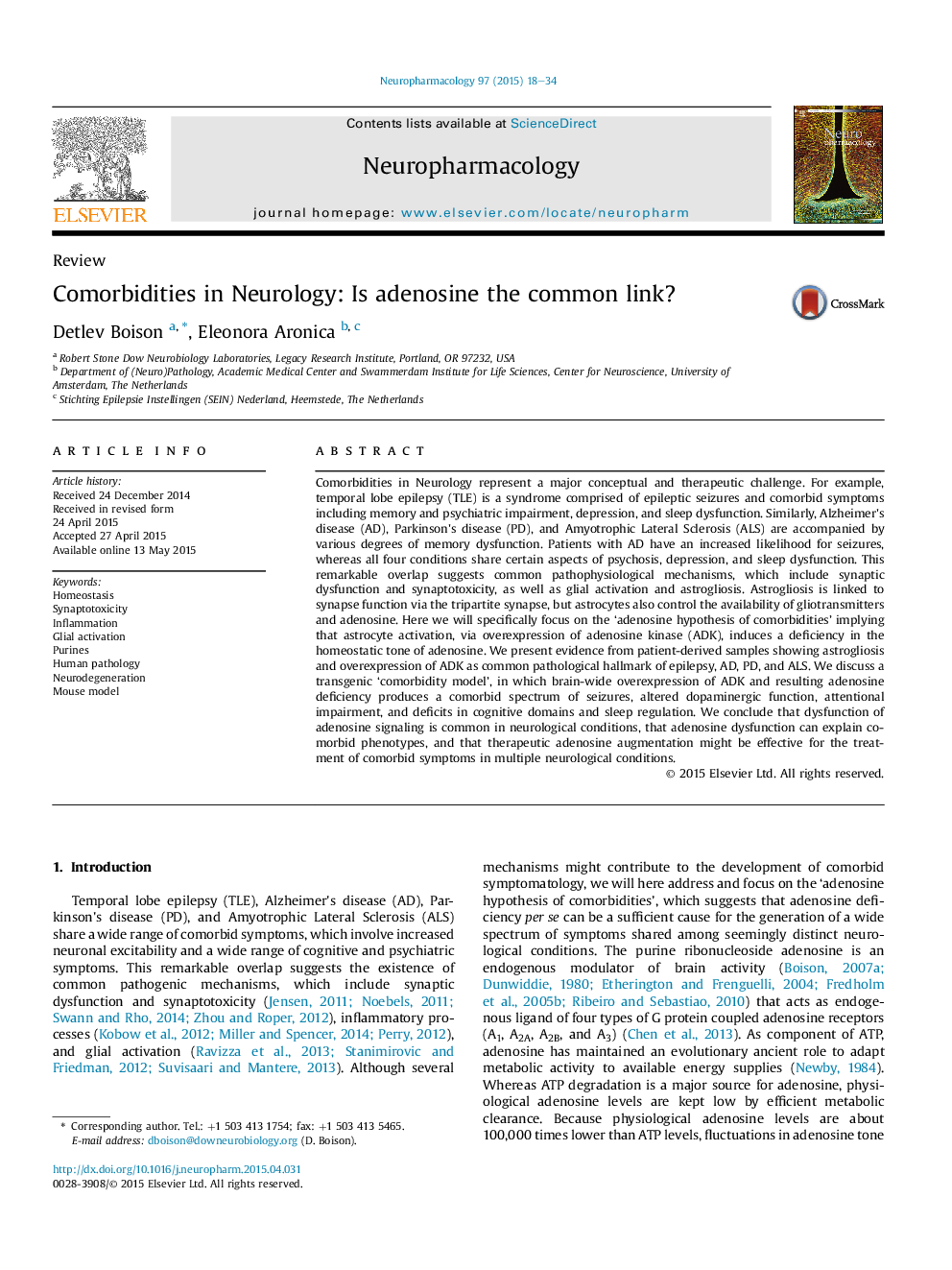| کد مقاله | کد نشریه | سال انتشار | مقاله انگلیسی | نسخه تمام متن |
|---|---|---|---|---|
| 5813938 | 1556618 | 2015 | 17 صفحه PDF | دانلود رایگان |
- Dysfunction of adenosine signaling is common in neurological conditions.
- Adenosine dysfunction can explain co-morbid phenotypes.
- Therapeutic adenosine augmentation is an effective strategy for multiple neurological conditions.
Comorbidities in Neurology represent a major conceptual and therapeutic challenge. For example, temporal lobe epilepsy (TLE) is a syndrome comprised of epileptic seizures and comorbid symptoms including memory and psychiatric impairment, depression, and sleep dysfunction. Similarly, Alzheimer's disease (AD), Parkinson's disease (PD), and Amyotrophic Lateral Sclerosis (ALS) are accompanied by various degrees of memory dysfunction. Patients with AD have an increased likelihood for seizures, whereas all four conditions share certain aspects of psychosis, depression, and sleep dysfunction. This remarkable overlap suggests common pathophysiological mechanisms, which include synaptic dysfunction and synaptotoxicity, as well as glial activation and astrogliosis. Astrogliosis is linked to synapse function via the tripartite synapse, but astrocytes also control the availability of gliotransmitters and adenosine. Here we will specifically focus on the 'adenosine hypothesis of comorbidities' implying that astrocyte activation, via overexpression of adenosine kinase (ADK), induces a deficiency in the homeostatic tone of adenosine. We present evidence from patient-derived samples showing astrogliosis and overexpression of ADK as common pathological hallmark of epilepsy, AD, PD, and ALS. We discuss a transgenic 'comorbidity model', in which brain-wide overexpression of ADK and resulting adenosine deficiency produces a comorbid spectrum of seizures, altered dopaminergic function, attentional impairment, and deficits in cognitive domains and sleep regulation. We conclude that dysfunction of adenosine signaling is common in neurological conditions, that adenosine dysfunction can explain co-morbid phenotypes, and that therapeutic adenosine augmentation might be effective for the treatment of comorbid symptoms in multiple neurological conditions.
Journal: Neuropharmacology - Volume 97, October 2015, Pages 18-34
